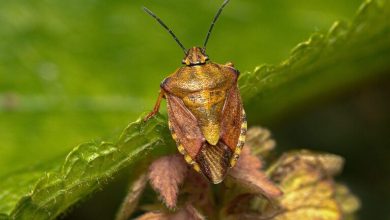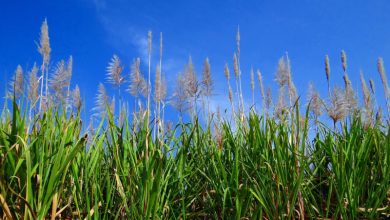Cover crops can provide many benefits to your cropping system. There are covers to break up soil compaction, others capture nutrients that the main crop left behind, and others will add nitrogen to the soil.
There are several methods and times of the year when cover crops may be seeded. Interseeding is an option to seed species that need a longer growing season or warmer temperatures to establish. A broadcast seeder behind a tractor or ATV can be used to do this from the time the corn plant has its second leaf until the crop is too tall to drive through without damaging it. At that point, a highboy sprayer fitted with a seeder or an airplane can be used until the crop is harvested.
To do the cover crop seedings early in the growing season, you will need to consider your weed management practices. If you cultivate to control weeds, then the final cultivation is a great time to get the cover crop seed spread. Large seeded species, such as peas, should be spread prior to the cultivation. Small seeded species may be spread either before or after the tillage.
If you rely on herbicides to control weeds in your fields, then you will need to determine if your chemical applications will have any carryover or residual effects. Herbicides are grouped into several classes based on their mode of action. Knowing these groups can give you some information about the possibility of injury to your planned cover crop.
The label on the herbicide jug will provide you with information related to the amount of time needed before a crop can be planted back on a field that was treated with that herbicide. These intervals must be followed, when the crop or an animal feeding on that crop may enter the food supply.
However, if a cover crop is planned to only provide soil coverage to address erosion concerns or to gain other benefits from cover crops, then seeding prior to the dates on the label is at the risk of the farmer. In many cases, a cover crop can be seeded before these dates and suffer little to no effects.
Herbicides with active ingredients from Group 9 (Glyphosate), Group 10 (Gluphosinate), and Group 22 (Paraquat) are contact herbicides and have no carryover or residual activity in the soil. A cover crop seeding may be done after these herbicides have been applied.
Notillfarmer.com has an excellent webinar by Scott Wohltman, who is an agronomist with La Crosse Seeds, which presents information from his experiences with cover crop and herbicide interactions. He ranked the herbicide groups from least to most worrisome. The following ranking did not include the contact herbicides previously mentioned because they have no risk of carryover.
Grass specific herbicides from group 1 were selected as the least concerning group, because they have a short residual period and only affect grasses. He made a point of noting some injury to annual ryegrass if it was seeded too early.
Weed killers from Group 4 will have varying amounts of residual effects in the soil. All of them target broadleaf plants, so if you are planning a grass cover crop such as annual rye grass or oats, there would be no problems. If you are planning a mix with legumes, then you will want to wait at least 30 days when 2,4-D is used and a bit longer for Dicamba based herbicides.
The seedling growth inhibitors in group 15 were third on the list. These residual herbicides may affect clovers and stunt annual ryegrass.
Group 5 herbicides include the triazines and these will primarily damage legume crops. Lower rates of the herbicides in this class will decrease the concern, unless you have soils with a high pH.
Fifth in his ranking were those herbicides in group 14. Some herbicides such as Sharpen were noted as being of little concern. Whereas, herbicides such as Spartan or Authority were of greater concern because they are known to cause issues with brassicas, legumes and cereal grains.
Group 27 herbicides were ranked sixth. Grass cover crops were not impacted when seeded after 120 days from application. Issues were found with other types of cover crops, so herbicides from this group may not be a good choice for those producers looking to seed a cover crop mix.
Last on his list for systems with cover crops was the class of herbicides in Group 2. There are many different herbicides in this group. Many herbicides such as Pursuit and Raptor were noted as being more persistent in the soil, while he indicated that he saw no issues with Resolve Q.
If you are planning to utilize cover crops, or are using cover crops and plan to change your spray program, to reduce potential weed resistance, then do your research so you can improve your soils with cover crops.
Cadillac News, 06/02/2018




